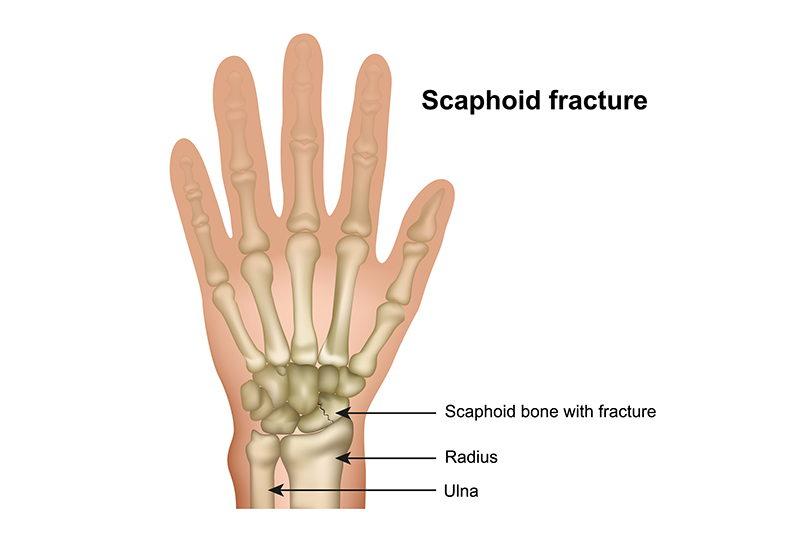Scaphoid Fracture

The scaphoid bone serves as a bridge between the carpal bones close to the forearm and the carpal bones close to the hand, and helps to maintain carpal stability. The scaphoid is involved with almost all movement of the hand and wrist. A fracture of the scaphoid bone usually occurs from a fall onto an outstretched hand.
Symptoms of a scaphoid fracture include pain, swelling, bruising, tenderness, and restricted thumb movement at the “thumb side” of the wrist. Many people with a scaphoid fracture assume that it is a wrist sprain. If neglected or misdiagnosed, scaphoid fractures may result in serious complications:
- Nonunion healing: the bone fragments heal out of proper alignment
- Avascular necrosis: diminished or no blood supply to the bone, causing the bone tissue to die
- Osteoarthritis of the wrist and disability
A scaphoid fracture is typically diagnosed with an X-ray. Every DOC location has in-house, state-of-the-art X-ray imaging. The DOC surgeon or PA will determine if the fracture is non-displaced or displaced. A non-displaced fracture can be successfully treated with a brace or cast and imaging at intervals to confirm that the fracture is healing correctly. Despite the smallness of the scaphoid bone, the cast may be fairly extensive and remain in place for six to eight weeks.
If the fracture is displaced and the bone ends are not in alignment, surgery may be the best option. Your DOC surgeon will manipulate the scaphoid bone back into proper alignment, stabilize the bone with fixation tools such as wires or a screw, preserve blood supply to the bone, and bone graft if necessary to achieve the original alignment. While the wrist is immobile in a cast or brace, finger exercises are important in order to maintain circulation and flexibility. Once the cast or splint is removed, guests will be prescribed DOC physical therapy to restore strength and flexibility for optimum, pre-injury movement.
For more information on the cost of care, click here




